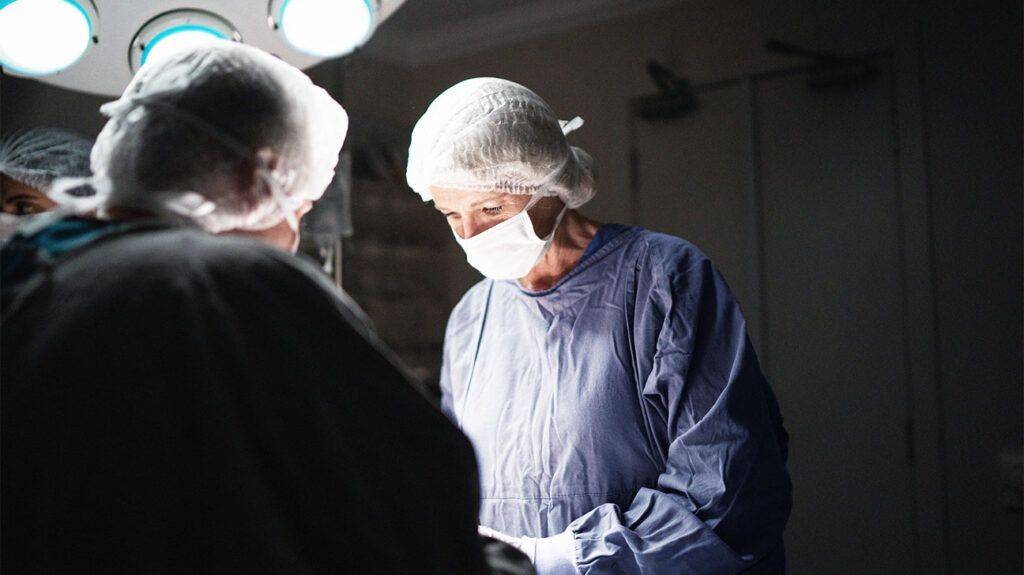Cholecystitis is inflammation of the gallbladder. Doctors usually treat cholecystitis by surgically removing this organ, known as a cholecystectomy.
Cholecystitis is inflammation of the gallbladder, an organ that stores and concentrates bile. This condition can cause pain, nausea, and vomiting. Cholecystitis can be acute or chronic.
A cholecystectomy is often the most effective treatment for cholecystitis.
This article explains why cholecystectomy can benefit people with cholecystitis, and its risks and benefits. It will also detail the procedure’s main steps before discussing how individuals can prepare for and recover from a cholecystectomy.

A cholecystectomy is when doctors surgically remove the gallbladder. This is the
Chronic cholecystitis arises when someone repeatedly experiences acute cholecystitis. This occurs when gallstones or over-concentrated bile block a bile duct. A blockage in a bile duct causes a buildup of bile, which leads to gallbladder inflammation.
A cholecystectomy is effective because it makes it impossible for this process to occur at all. While other treatments can reduce the risk of cholecystitis, they are generally not as effective.
Learn more about cholecystitis.
There are two main types of cholecystectomy: laparoscopic and open cholecystectomies.
Laparoscopic, or keyhole, cholecystectomy
After removing the gallbladder, the surgeon will use staples, stitching, or cauterization to close the incisions.
Anyone who is going to receive a cholecystectomy should discuss how to prepare with a doctor. Useful questions to ask include:
- whether to fast before the surgery
- whether to stop taking certain drugs or medications before the surgery
- what to expect from the surgery and what its risks are
Both
About 30 minutes before surgery, doctors typically give individuals preoperative antibiotics. These medications reduce the risk of developing an infection after surgery.
Doctors usually perform several tests before surgery, including:
- gallbladder ultrasound
- abdominal CT scan
- HIDA scan, which helps visualize the gallbladder using a radioactive tracer
- blood tests
These tests will let doctors know whether the person can undergo surgery and may inform how surgeons approach the cholecystectomy.
The recovery time for a cholecystectomy depends on the type of operation. Individuals can recover from laparoscopic cholecystectomy within around
Recovering from a cholecystectomy involves resting while the body heals. During this time, doctors will keep a close eye on the individual, so they can catch potential complications as soon as they arise.
According to a
- reducing pain in between 66% and 100% of people
- reducing indigestion in between 41% and 91% of people
- reducing heartburn in between 43% and 72% of people
- reducing acid reflux in between 24% and 92% of people
- reducing nausea in between 54% and 98% of people
- reducing vomiting in between 57% and 100% of people
People tend to report high satisfaction after having a cholecystectomy.
As with any form of surgery, a cholecystectomy comes with the risk of some complications. These include:
Such complications arise in
Post-cholecystectomy syndrome affects around
The following are some questions people frequently ask about cholecystitis.
What is the most common treatment for cholecystitis?
For both
How long does it take to recover from cholecystitis gallbladder removal?
Recovery times will vary from person to person. However, people generally need between
Cholecystitis is inflammation of the gallbladder. It can be acute or chronic. For both types, doctors generally prefer to treat it by surgically removing the gallbladder, known as a cholecystectomy.
Surgeons can perform a cholecystectomy with open or laparoscopic surgery. The latter is less painful and typically less likely to have complications. Both procedures can significantly improve the symptoms of cholecystitis.
